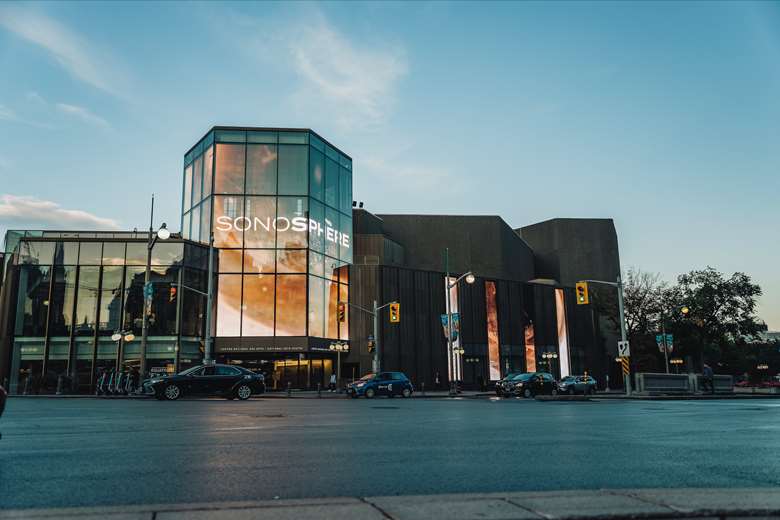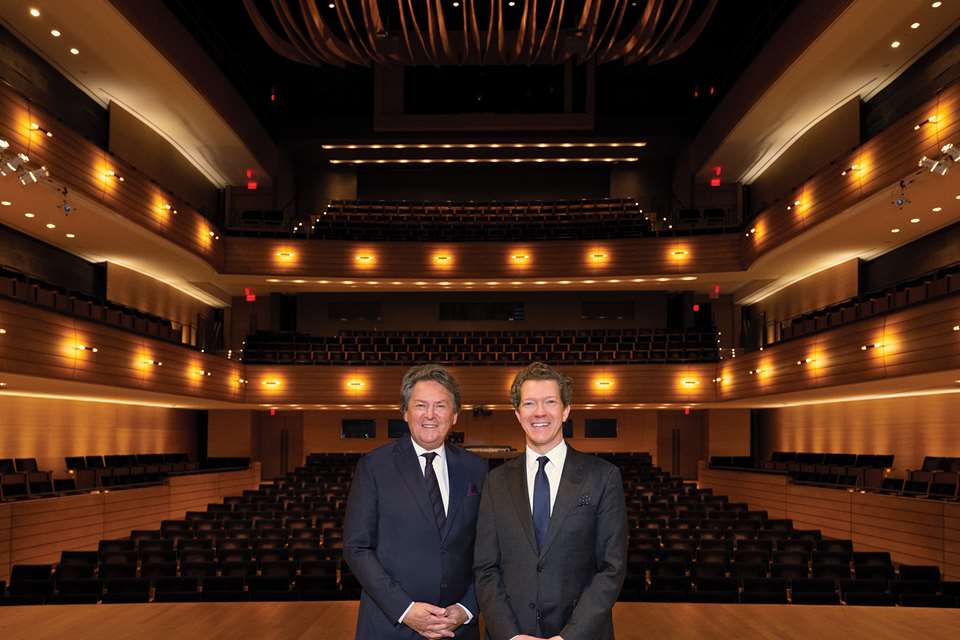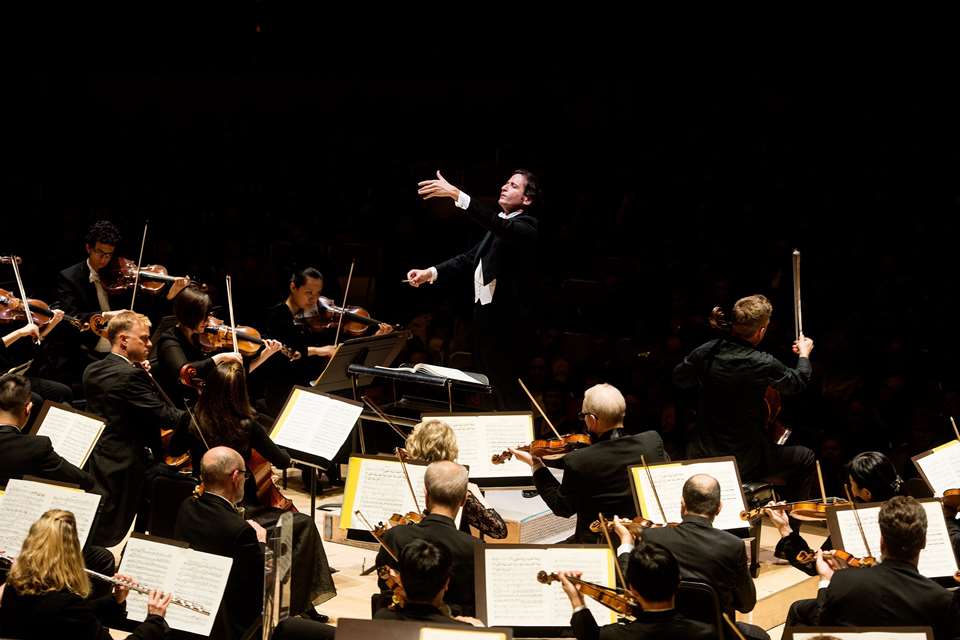Nelson McDougall on why Canada invests in the NAC Orchestra
Florence Lockheart
Friday, November 3, 2023
The managing director of Canada’s National Arts Centre Orchestra sits down with Florence Lockheart to talk about why, despite the ongoing impact of the pandemic, he's optimistic about the future of orchestral music and its audiences

© Curtis Perry
Canada’s National Arts Centre (NAC) is a welcome sight for eyes made sore by the struggles facing the classical music industry in the UK. The bilingual, multidisciplinary performing arts organisation is supported in large part by federal funding and the Centre’s home, in a brutalist complex in the centre of Ottawa standing on the unceded territory of the Algonquin Anishinabeg Nation, underwent a $225 million (£134 million) renovation in 2017. Designed by Diamond Schmitt, the architects behind the successful renewal of the Lincoln Centre’s David Geffen Hall, the Centre feeds this enormous investment back into the community through the work of its Dance, English Theatre, French Theatre, Popular Music and Variety, Indigenous Theatre (the first of its kind in the world) departments as well as through its resident ensemble, the NAC Orchestra.
Nelson McDougall took over management of the orchestra from Arna Einarsdóttir in 2022, having spent 18 years with the ensemble in various management roles. His enthusiasm for the NAC’s community focus is evident throughout our conversation, as is his eagerness for the orchestra – and the organisation as a whole – to represent the audiences it serves.

Could you describe the classical music scene the NAC Orchestra experiences in Ottawa and how it fits into the Canada classical music industry as a whole?
As the NAC Orchestra, of course, we live and breathe within the walls of the NAC. However, being a Federal Crown Corporation brings with it the unique privilege and responsibility to have, not only a local impact, but also national impact. So, while we are bricks and mortar within the city of Ottawa and the province of Ontario, our strategy and our activity go beyond this to an international level.
Canada is a very large country and, even in a digitally connected world, geography does matter. There are very specific localised challenges and concerns that our various orchestras have, but it's a very tight knit community. There are over 100 orchestras across Canada that stay connected through a national association called Orchestras Canada. It's a very friendly community and we find collaborative opportunities and creative projects. NAC is a federal organisation, so we are very privileged to have financial support from the government, but not all Canadian orchestras are in that category. Various orchestras will have municipal and provincial support and philanthropic support is a very helpful source of revenue too.
"We have a responsibility to listen, to learn and to provide space for indigenous storytelling, then bring that to classical music"
I've noticed in my travels that the concerns and challenges which have had a light shone on them through the pandemic are quite universal. It's a fragile state which has a direct impact on the financial condition of our orchestras, but I think what we're all also struggling with the question of how we remain relevant. We are no longer operating in the days where, if we play Beethoven five, people are just going to come. We have to understand what we mean as an orchestra and how that is relevant in our community.
Audiences vary from festival to festival, city to city and country to country. How would you describe the audiences the NAC attracts?
There are certain core fundamental challenges all orchestras are facing in bringing back previous audiences and growing our audiences, not just in numbers, but in terms of diversity. Here in Ottawa, I'm very delighted to be able to report that we're seeing growth in both areas. We're doing well with audience capacity and we're seeing really diverse audiences in terms of age and community, so we're really delighted. It's not by fluke, we are working very hard at reaching different communities, working with them to ensure that we're programming in a way that speaks to them.
I'm very optimistic about that growth across Canada, but I say this on the heels of devastating news that Ontario’s Kitchener-Waterloo Symphony has just cancelled its season. This is really crushing news for that community and for Canada as a whole. It's a sign that we're not there yet in certain areas.
In the UK we've had similar examples of organisations having to close their doors because of a lack of funding. How does funding work at the NAC and how does it impact the orchestra?
As a federal organisation, we have a fairly significant part of our revenue – up to around 50% – which comes from the federal government. The rest of that is made up with ticket sales, donations and commercial operations. We feel the privilege and responsibility of ensuring that the impact that we have is not only in our community but across the country and internationally.
The funding also informs the NAC’s strategic plan. Through the years as an employee and administrator with the orchestra, I knew of the NAC’s plan, but didn’t understand why our orchestra didn’t have one. When I took over the responsibility of leading the orchestra it dawned on me that the NAC’s strategic plan is our plan. It's up to us to align our activities, our goals, our expected impact with the NAC’s strategic plan. I don't find that limiting or distracting in any way, I find that very inspiring.
I've also thought it very impactful, as evidenced by the audiences that we're seeing. I think that the positive response that we're seeing in Ottawa has been built on the new approach we've taken as part of our commitment to the plan. The strategic plan informs how we allocate our attention and our resources, artistically and otherwise and it informs our professional development programme, how we're choosing our artists, how we build a profile for our orchestra, and how we strengthen our relationship with our community.
 'The response from the musicians to the repertoire and programming decisions we've been making on these subjects of underrepresented voices has been so positive ' ©Freestyle Photography
'The response from the musicians to the repertoire and programming decisions we've been making on these subjects of underrepresented voices has been so positive ' ©Freestyle Photography
Your upcoming season includes a distinctive line-up of guest artists. Could you talk a bit about how these collaborative partnerships are formed?
Part of the NAC’s responsibility as a federal organisation is to bring exceptional artists here to work with our orchestra and to share that work with the audiences of Ottawa. That leads us to look for artistic excellence, which is an obvious answer, but it's really true. It’s a big piece of our mission to encourage artistic growth, to heighten the profile of the orchestra at home and internationally.
There's also a strategic component at play. One of our driving strategic themes is supporting sector recovery. That means showcasing young artists and ensuring that we're investing in that growth and in the next generation. We also want to lead the renewal of the performing arts sector across Canada by investing in Canadian artists and in Canadian creation. In my world that means commissioning current and emerging Canadian composers. Canada is a very diverse country and it's growing increasingly diverse, so we've been looking for the artists in those communities, working with them and lifting them up.
"We are working very hard at reaching different communities, working with them to ensure that we're programming in a way that speaks to them"
The pandemic had a devastating impact on the performing arts, and it showed us that we have issues in our industry in terms of how we're engaging, who we're engaging with and the stories we're telling. We needed to have these important conversations to learn to engage with our communities and earn our social licence to operate. That's been an incredible journey for us, and it’s guided how we decide who we engage with.
As well as the NAC Orchestra, the NAC is also home to Indigenous Theatre. In your experience, how does Canada’s indigenous population fit into its classical music industry?
I don’t speak for the indigenous experience so my answer to this question comes from my perspective. I'm not sure how Canada’s indigenous population fits into its classical music industry yet, but I can tell you that the start of that journey is a conversation. We have a responsibility to listen, to learn and to provide space for indigenous storytelling, then bring that to classical music. Classical music provides an incredible medium for sharing stories and what an amazing artistic musical palette we have in our orchestra. So, by collaborating with different artists, we can help move that conversation along.
"We are no longer operating in the days where, if we play Beethoven five, people are just going to come. We have to understand what we mean as an orchestra and how that is relevant in our community."
This season we're very delighted to have on our stage a family production called Spirit Horse, about a species of horse that has been preserved and nurtured by the indigenous community. It's been quite a journey and I feel very privileged to work at a place where we have indigenous theatre. I feel that it's a shared responsibility around the NAC to help support indigenous success.
The NAC Orchestra’s upcoming season also includes a strong commitment to new music. Do you find Canadian audiences particularly receptive to new works?
It’s such a different conversation now. Six years ago we would be sitting down with the marketing team and they’d say, “How do we bury a new work in the programme alongside Beethoven five?” That was the experience, that was the context. We don't really talk that way anymore. There's much more excitement around new work and we like to think that's partly driven by the artists and also, I think, by the patrons. There's this payback of having more diverse, younger audiences who want to hear new stuff. I think with this diversity, with these different perspectives, there's a craving for it and it's something that we want to support. It's part of our meaning.
 The NAC Orchestra performs under the baton of music director Alexander Shelley © Dwayne Brown Studio
The NAC Orchestra performs under the baton of music director Alexander Shelley © Dwayne Brown Studio
The response from the musicians in terms of the repertoire and programming decisions we've been making on these subjects of underrepresented voices has been so positive. It's kind of a no-brainer.
What are the NAC’s plans for the future?
This is hard to say, but we are still in many ways invisible in our own community. It sounds obvious, but as a performing arts building, bricks and mortar, your lifeblood is the community. If you don't bring people into that hall from your community, you can't continue. I think we know we've taken that for granted. Now we are really strengthening our relationship with our community. In fact, I've restructured my entire team to create a position called the senior manager of Community Partnerships so that we have someone to lead that conversation and that strategy. We will work to refresh, renew, and increase those partnerships and relationships in the community.

